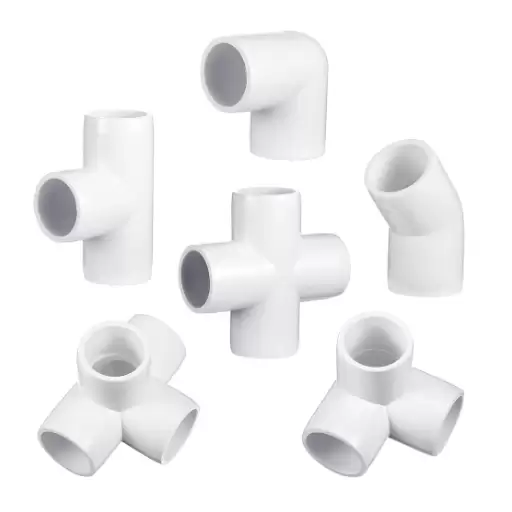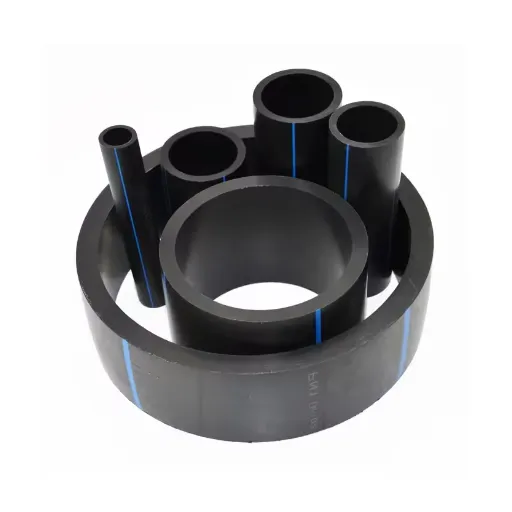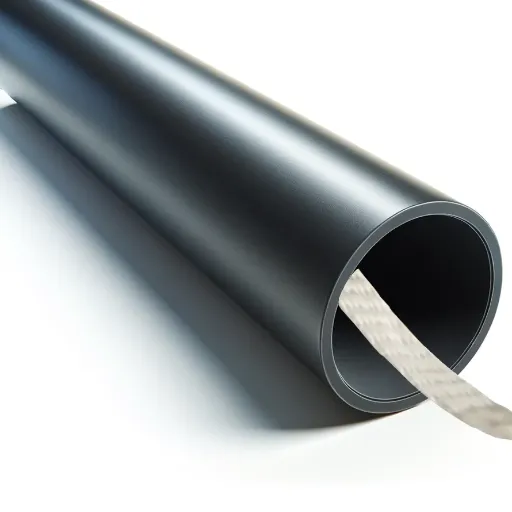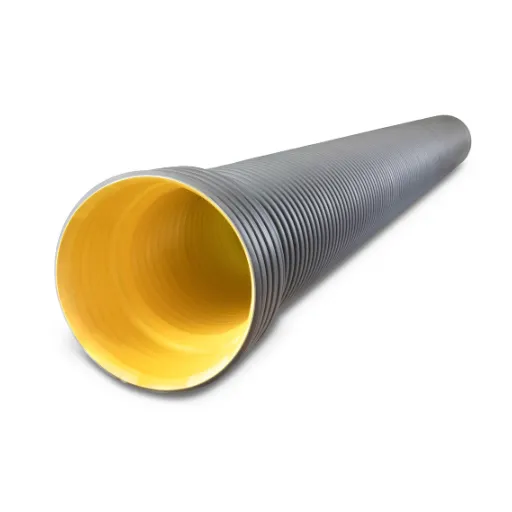Connecting PVC pipes is always the most pivotal aspect of any plumbing project, but what if threading is not an option? Whether engaged in any DIY variations or at construction innovation thereby or maybe merely looking for quick-fix, cost-saving solutions, modern techniques exist nowadays to create threadless connections with ease. This article digs into the cutting-edge inventions and commercial wisdom for connecting PVC pipes without threads in 2025. From advanced adhesives to state-of-the-art fittings, we will present the tools and techniques necessary for secure and durable connections that will stand the test of time.
Traditional Methods for Connecting PVC Pipes
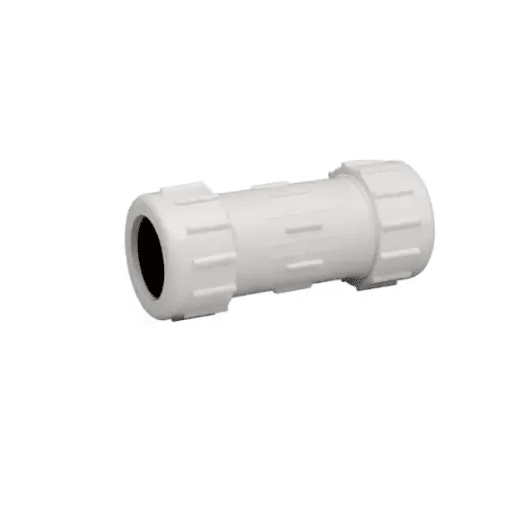
Using Solvent Cement
Solvent cements are one of the most reliable and commonly used joining methods for PVC pipes. It softens- chemically- the surface of the pipes and fittings, which are then fused to form a very strong and water-tight bond. It is great for high-pressure and permanent installations, as the bond formed is irrevocable once the solvent cement sets.
The surfaces of the pipes and fittings are thoroughly cleaned to free any dirt, grease, or residue. A PVC primer is applied to prepare the surfaces for bonding, followed by the application of solvent cement. After application of solvent cement, the pipe and fitting are brought together quickly with a slight twisting motion so the cement is equally distributed. It is then necessary to hold the assembly firmly for a few seconds until the bond develops.
With a well-made solvent cement joining, maintenance is hardly needed for up to several decades. One has to be careful in selecting the right solvent cement intended for the specific type and size of PVC being joined. Follow all instructions on the product label and all safety guidelines for a result that will not leak and will stand the test of time.
Overview of Couplings
In any piping system, couplings are pivotal components meant to tightly connect two pipe segments while aligning them correctly. Typically, couplings are employed in plumbing, irrigation, and industrial systems for pipes that may be of identical or varying sizes and materials. Couplings make certain that the liquids or gases flow seamlessly through the system, which also provides structural integrity to the system and prevents leakages.
There are mainly two types of couplings-frequency rigid and flexible. Rigid couplings provide a solid connection and thereby resist movement; these are best employed in systems with strict alignment requirements. On the contrary, flexible couplings allow for slight misalignments, vibrations, or thermal expansions, thus decreasing potential stresses on the piping system and enhancing longevity. Based on an application’s requirements, one decides on which type to use.
Couplings come in varied materials such as PVC, steel, or brass to complement the properties of the pipe to be joined. For PVC systems, solvent weld couplings are mostly employed as they create a chemically strong bond that is leak-proof. Compression and threaded couplings can also be options for applications that cannot do solvent welding. An appropriate coupling leads to a long life for the system and ensures safety. Following such precedent, therefore, coupling installation should promote correct installation practices, be in conformance with working conditions, and be deemed suitable for the materials that are attached.
Pipe Glue Techniques
Proper pipe solvent cementing techniques ensure the joints remain durable and leak-proof in piping systems. Joining plastic pipes by use of solvent cement is one of the most common procedures. A primer is usually applied first to soften the pipe material for bonding. Then comes the solvent cement, which chemically welds the pipe to the fitting. Any solvent cement application that is not clean and evenly applied cannot guarantee a secure bond.
Before you glue them, it is very important to prepare the surfaces of the pipe and fitting. Cut the pipe with the appropriate cutter to obtain a square end. Then, remove any burrs or sharp edges from the surface to make smooth contact between surfaces-wiping off with sandpaper or a deburring tool. Clean the pipe or fitting surfaces using either a cleaning solution or a dry cloth to get rid of dust, dirt, and grease. Proper preparation can greatly activate the glue and make for stronger joints.
After applying the glue, put the pipe and fitting together straight away, while gently turning the tube half a turn to spread the solvent cement evenly. Pre-surface exposure time must be observed during which the solvent cement is allowed to become tacky. Hold the joint for a few seconds to set the cement. Have ample curing time before putting pressure on the system, as directed by the glue’s manufacturer. If followed properly, these steps would guarantee that the joints are strong and reliable, less prone to failure over time.
Innovative Techniques for Connecting PVC Pipes Without Threads
Electrofusion Welding
Electrofusion welding is a fine yet highly effective way employed in connecting PVC pipes in opposition to using classical threads or adhesives. The process capitalizes on fittings that are specially made with a coating of resistance wires. Upon the passage of electric current through the wires, heat develops, melting the inner portion of the fitting and the outer part of the pipe. Upon cooling and curing, they give a seamless, strong, and leakproof bond. This process is in high demand in the domains where accuracy and durability are paramount, such as the gas and water distribution networks.
An important consideration with electrofusion welding is its application to ensure consistent and reliable joining, especially in challenging environments. Such welding mitigates human error as the welding parameters for temperature and time are controlled automatically. It is also suitable for working in tight spaces or underground pipe installations where a more traditional method could become cumbersome to apply. Other than that, it is compatible with almost all pipe diameters and poses a very stock option for various applications.
The recent progression made in electrofusion technology facilitates barcode scanning to make setup easier, data logging for quality assurance, and lower energy consumption. The importance of these advances is that they allow for an exact control of the welding operation while supporting the enforcement of international standards. This is what makes electrofusion welding one of the most favored types of welding in pipe systems, where safety, durability, and efficiency are considered very important.
Low-VOC Adhesives for Sustainability
With a thrust in sustainable construction and manufacturing, low-VOC adhesives have thrust to prominence as an environmentally friendly choice. Volatile organic compounds, or VOCs, are chemicals that can freely evaporate into the atmosphere, creating air pollution and potential respiratory problems. Low-VOC adhesives are claimed to release little of the aforementioned noxious compounds while still offering maximum bonding performance. Fewer VOCs, in turn, mean better indoor air quality and some credits toward green building certifications such as LEED and WELL.
Low-VOC adhesives are formulated to meet a wide array of application needs-from the flooring and paneling industries to automotive and packaging. These adhesives evolved with the advances in chemistry to develop adhesives with high durability, resistance to environmental stress, and compatibility with every kind of substrate. Many manufacturing companies are inclined to produce bio-based or water-based formulations to improve sustainability in adhesive products further. Such steps reduce the environmental footprint, enhance the safety during handling, and allow better application of low-VOC adhesives.
Market trends show that the use of low-VOC adhesives is being adopted at a great pace due to stricter environmental regulations and more demand put forward for eco-friendly products. Research studies conclude that the global low-VOC adhesive market would see considerable growth in the coming years. Companies are focusing on adhesive technologies that offer a perfect balance between performance, criticism, and sustainability. This innovation is opening doors to industrial practices that are sustainable, thereby making a healthy environmental atmosphere for both the workers and end-users.
Automated Connection Methods
The industries were automated by qualifiers, industries that require assembly and structural processes. Through the building of robotic manipulators, together with computer algorithmic machine learning and integrated sensors, these methods bring utmost precision and consistency. Beforehand, the end-user assembly was prone to errors and inconsistencies, whereby this set of methods strives to minimize constraints in the manual assembly scenario that weaken the consistency of precision and efficiency in production.
Similarly, they immensely support areas under automotive, aerospace, and electronics, where speed and precision are heavily favored. In integration with AI, their abilities are now more highlighted with adaptive adjustments of the systems in real-time to react according to the environmental changes or the specific needs of the project. Data are collected through advanced sensors along the way, allowing continuous inspections so as to give insights towards predictive maintenance and optimization of the production workflow.
Industries with automated connection solutions in operation benefit from greater production and quality, while this simultaneously allows for the reduction of waste and decrease of resource consumption. In alignment with sustainability trends, the key considerations are to reduce material consumption and increase efficiency. This marks the onset of automation technologies, which are molding the very future of manufacturing and, henceforth, are imparting advancement across several fields.
Step-by-Step Guide to Connecting PVC Pipes
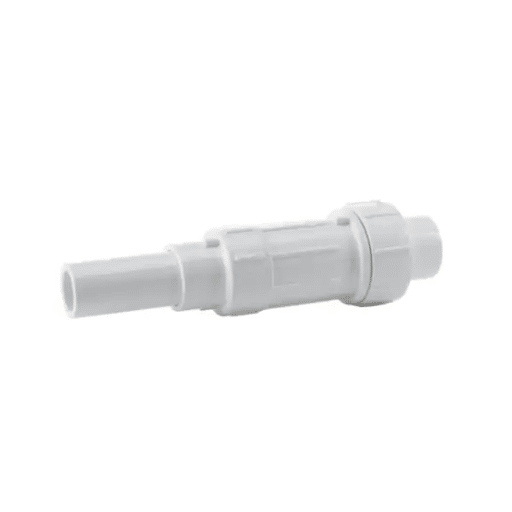
Preparing the Pipes and Fittings
The tools and materials needed must be gathered to facilitate the smooth assembly of the PVC pipe connection. Specifically, a PVC cutter or hacksaw will work. Additionally, a deburring tool, sandpaper, measuring tape, and marker pen are all necessary for accurate cuts, marks, and measuring. Ensure that PVC pipes, fittings, and PVC cement or primer, as per your project requirements, have also been kept ready. Cloths or rags must be kept handy for cleaning off any dust or dirt on the surfaces before the adhesion.
Once the tools and materials are ready, the next step is preparing the pipe ends. Use the PVC cutter or hacksaw to cut the pipe to the desired length, making sure that the edges of the pipe are straight and even. Once cutting has been accomplished, any burs and rough surfaces should be ground away with a deburring tool or sandpaper. Smooth edges on a pipe minimize leaks and allow a cleaner and stronger connection to be made. Clean pipe ends and fittings with a cloth to make sure no dust or oily materials are contaminating the bonding process.
Finally, check the fittings and dry-fit the pipe sections to make sure that everything lines up accurately before adhesive is applied. Label the pipes and fittings with a marker for reference if there are many connections involved in the project. During this step, you are able to finalize adjustments to the pipe layout, double-check all measurements, and confirm the alignments of all connections. Proper preparation is a step that ensures a durable, leak-proof PVC pipe assembly.
Applying Solvent Cement: A Detailed Process
The correct application of solvent cement is necessary to cause an impregnable, permanent merge between PVC pipes and fittings. Dirt, grease, and moisture should all be wiped off from the pipe ends and interior of the fittings using a clean and dry cloth. Then, use a pipe cleaner or primer intended for PVC to clean the surfaces to be bonded; this step gently degrades the surface and, in turn, provides a firm grip for the cement.
After preparation of the surface, an even coat of cement should be spread on the outside of the pipe as well as on the inside of the fitting-the whole area must be covered. Try to avoid excessive amounts of cement, for an overabundance can weaken the joint and give it an ugly look. Insert the pipe quickly, 45-degree turn to fully distribute the cement tightly. Hold for 15 to 30 seconds to allow the initial set; during this time, ensure proper alignment.
The joint must then remain unmoved sufficiently long for at least 15 minutes to permit the solvent cement to set before any movement that might weaken or improperly affect the joint can occur. The standard curing time may be 24 hours, but this depends a great deal on the solvent cement used and on further environmental conditions. Drying and curing times may vary among manufacturers; hence, they should always be checked with the provided installation instructions. If correctly followed, these directions will yield strong yet leak-resistant PVC pipe joints that will last for good.
Using Electrofusion: Step-by-Step Instructions
Electrofusion serves as a welding technique for polyethylene joints that have to be dexterous to produce stronger and reliable joints. To bring out the best results, the following steps must be observed:
- Cleaning of Pipes and Fittings: Firstly, clean the last surface of the pipes and the inside surface of the electrofusion fitting. Make use of a pipe scraper to remove the oxidized layer from the pipe’s surface so that a clean contact area exists. Do not touch the prepared surface as it may be contaminated.
- Alignment of Components: Bring the pipes into the electrofusion fitting. These fittings and pipes must be clamped or aligned so that they cannot move when being welded.
- Fitting Connection: Connect the electrofusion fitting(s) to the control box and input the information as required, often provided as a barcode on the fitting itself. The modern electrofusion systems set automatically, according to the barcode.
- Heating and Fusion: Initiate the electrofusion process. The control unit produces an electric current through the embedded metal coils in the fitting. The generated heat melts the plastic and welds the pipes and the fitting together.
- Cooling Time: Let the joint cool for the specified time as per the manufacturer’s instructions, and never move or stress the joint during this time. Proper cooling guarantees strong and leak-proof welding.
- Weld Inspection: Finish the cooling time with a visual inspection of the joint to look for any defects, such as incomplete melting or misalignment. Certain systems record weld data for traceability and quality assurance.
Electrofusion offers a dependable joining method for pipes across industries if these principles are followed. Always refer to the manufacturer’s instructions and industry standards for further details and precautions.
Comparative Analysis of Connection Methods
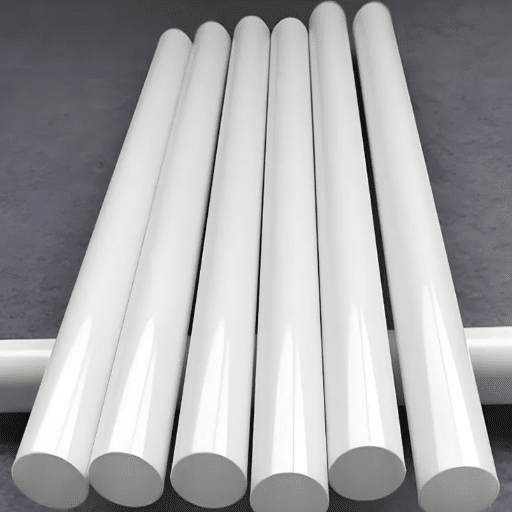
Table of Adhesive Bonding vs. Electrofusion Bonding
Adhesive bonding is less costly and simpler to apply, whereas electrofusion bonding employs precision and strength for special materials.
| Aspect | Adhesive | Electrofusion |
|---|---|---|
| Material | PVC | HDPE/Poly |
| Cost | Low | High |
| Ease | Simple | Complex |
| Strength | Moderate | High |
| Precision | Low | High |
| Use Case | General | Specialized |
Case Studies: Efficiency Improvements in Municipal Projects
Case Study 1: Water Pipeline Restoration Using Electrofusion
In their efforts to optimize water pipeline restoration, a medium-sized municipal water utility found that electrofusion joining provided better service than classical adhesive bonding. Pending replacement of aging HDPE pipelines, the joint witnessed significant development in aspects of durability and leak resistance. Though the purchase of electrofusion equipment was costlier at the initial stages, maintenance costs were greatly reduced, as well as the improved lifespan of the joints, which cumulatively add up to a 25% cost saving after five years. Electrofusion also imparted more strength and precision to pressure regulation over the water distribution system, thus allowing an 18% reduction in water loss-a highly valuable asset for drought-stricken areas.
Case Study 2: Retrofit of Wastewater Management Infrastructure
In the metropolitan city, the government undertook a complete retrofit focusing on the wastewater management infrastructure to meet the ever-growing demands of the population. Adhesive bonding was considered because of its low cost with PVC pipeline installations and thus, an operation preferable for non-pressure applications. The adhesive work was much easier to do; therefore, contractors finished the project 40 percent faster than initially scheduled, minimizing any form of disruption in the city environment. Moderate strength was offered by adhesive bonding, but since the application was in areas with little or moderate stress, it worked quite well for the project in terms of cost and operational demands. With minimal delays and maximum performance, the project is a classic demonstration of the benefits of combining bonding techniques with materials appropriate for the specific application.
Therefore, these examples emphasize that applicable bonding techniques have to be selected depending on the materials, budget, and operational considerations in order to attain efficiency for municipal projects.
Trends in 2025 and Their Impact on PVC Connections
- PVC Materials-Focus on Sustainability: Environmental consciousness has taken precedence. In 2025, sustainable PVCs that find new-age development are being looked into by manufacturers. Such developments of recycled PVC and bio-based variants lead to decreased carbon emissions. It is also being concluded by studies that worldwide demand for sustainable PVC will register a 12% CAGR growth, propelled by tightening regulations and consumer preferences.
- Advanced Adhesive Technology: PVC joining methods incorporate just such new adhesives that bring in durability and resistance to extreme temperature situations. New-generation adhesives can increase the lifespan of installations by 30%, therefore safeguarding installations and ensuring they endure over time in critical applications, research indicates.
- Integration of Smart Monitoring Systems: Smart sensors are increasingly being integrated into pipes and PVC fittings so that real-time information can be obtained regarding pressure, leakage, and wear of the material. Estimated to cross $8 billion by 2025, the market for IoT-enabled piping systems will bring in greater efficiencies and lower maintenance costs.
- Shift Toward Modular Construction Techniques: Modular construction works with prefabricated elements and thus redefines PVC connection design. This trend can potentially reduce installation time by up to 40% and reduce on-site waste. Standardized PVC components designed for modular methods are fast gaining acceptance in infrastructure and industrial applications.
- Better Resistance to Harsh Environments: The development of PVC formulations provides resistance to chemicals, UV exposure, and extreme climatic conditions. Such improvement in product application is a result of increasing demand for PVC connections in industries, such as agriculture and energy, where material performance is challenged by harsh environments. In the global market, an anticipated growth of 18% for the specially resistant PVC products is set to take place by 2025.
These trends promise an evolving landscape for PVC connections owing to technology enhancement and increased sustainability concerns.
Expert Tips for Successful PVC Pipe Connections
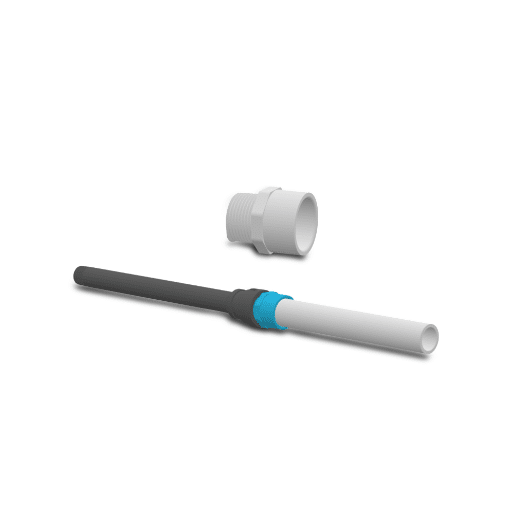
Best Practices for Leak-Proof Seals
From my experience, a leak-proof union of the PVC pipe and fittings requires that they be thoroughly prepared. The first step is to ensure that the ends of the pipe and fittings are clean, dry, and free from any dirt. A layer of dirt can hamper the formation of a strong bond between adhesives, leading to leaking in the course of time. To that end, I commence by wiping the surfaces very thoroughly with a clean rag and, if I notice any roughness or imperfections, I might lightly sand the edges.
The correct application of primer and cement must follow next. The primer aids the surface to accept the strongest bond possible, so I ensure thorough coating of both pipe and fitting. After the primer has set for a moment, the next step involves applying with a liberal brushwork of PVC cement-except that the pieces are put together before the cement starts to set. Making sure the pipe is pushed and twisted with great force into the fitting establishes the strongest connection. I then advise keeping the joint immobilized for about 30 seconds.
Lastly, the time taken for curing is important for the seal to hold up over time. Depending on temperature and humidity conditions, I allow the connection to sit sealed for at least 24 hours to cure fully before any pressure is fed through it. Skipping this step weakens the quality of the seal and makes it prone to leaks. PVC connections have held up well and been leak-free under even the most demanding conditions when these steps were scrupulously followed.
Avoiding Common Mistakes
The strength and reliability of a PVC connection can suffer from some common mistakes. Among the most frequently encountered errors is the failure to clean and prepare surfaces properly before applying primer and cement. Dirt, grease, or moisture on the pipe or fitting prevents the bonding effect from taking place; this, in turn, leads to weak joints that manifest into outright leaks after some time. Therefore, surfaces must be cleaned thoroughly and dried completely before proceeding with the working steps.
Another mistake is rushing the installation of primer and cement. If you skip the primer’s application, the pipe might not hold well. Primer acts by softening the PVC’s surface, giving the cement time to penetrate and create a stronger bond. Cement must be applied evenly to the surface of the pipe without clumps or dry spots to avoid weak joints. Following all these steps carefully, one by one, will go a long way in strengthening your PVC joints.
One other thing is the improper ones because of an incorrect alignment, due to which they may be rejected. PVC connections demand a firm and precise placement when joining the pipe and fitting. The misalignment weakens the strength of the joint and creates stress points that would fail at an early stage when under pressure. To circumvent such instances, make sure you are assembling the connections on a flat and sturdy surface and have sufficient time to align and hold the connection firmly for several seconds until the cement is set. These small things, if addressed properly, can save you thousands of dollars and yield leak-proof and permanent results.
Frequently Asked Questions (FAQ)
Q: What are the best methods of connecting PVC pipe if there are no threads on it?
A: More ways are available and used to connect PVC pipes without threads, one of which is by using cement for PVC, another is by solvent welding, while the third option involves gluing using an adhesive specifically made for PVC. These methods guarantee the act of sealing water, which is very important when creating a strong linkage for plumbing.
Q: Is it possible to join PVC pipes without the use of fittings?
A: You can indeed join two PVC pipes without using fittings if you use PVC cement or an adhesive on the ends of the pipes. The surfaces of the pipes must be cleaned, and the ends must be deburred to ensure a good connection.
Q: How do I apply PVC cement for a good connection?
A: To apply PVC cement, first clean the pipe surface and the fitting. Apply a thin coat of PVC cement to both the pipe and fitting, then immediately push the pipe into the fitting to ensure a seal that is watertight. Hold the bond firmly for at least a few seconds to ensure the Thames cement won.
Q: Is it required to apply primer before applying PVC cement?
A: Not always. However, primer does enhance the bond created by PVC cement. The prior cleaning provided by the primer allows the cement to have a better bond surface, especially on pipes bigger than 2 inches or if working on older pipes.
Q: How do I seal things underwater when connecting PVC pipes?
A: Ensure the ends of the pipes are clean and smooth, and apply cement to the pipes evenly. Just weld the two pipes and let them sit for a while so the cement will dry-well pressurized.
Q: What tools are required for joining PVC pipes non-threaded?
A: Diameter cutters to cut pipes cleanly, PVC cement or glue, and a deburring tool to remove any rough edges; a heat gun could be beneficial if using heat to soften pipe ends for a better fit.
Q: Can you connect PVC pipes with compression fittings?
A: Yeah, they may use compression fittings to connect PVC pipe without threads. Such fittings form a tight connection without adhesives and are, at certain times,s more convenient to use in plumbing applications.
Q: What precautions should I take when doing any final work with PVC cement?
A: It is important to work with PVC cement in a well-ventilated area to avoid inhaling the fumes. Wear gloves to protect the skin of your hand, and do not forget about your safety glasses in case of accidental splashing into your eyes.
Q: I’d like to connect two pipes in a tight spot. What should I do?
A: In tight spots, flexible PVC connectors or rubber couplings might do the trick. Both allow for easier installation while permitting slight misalignments so you can secure the pipe connection without threaded fittings.
References
- Mechanical Engineering Senior Design Capstone: Collapsible HVAC Coil Expansion Table
Discusses innovative designs in the mechanical field, which include methods for connections without threading. - Sewer Vapor Intrusion Pathway: Simulation of Indoor Piping Systems
Studies piping systems and fittings with research on the air and VOC escape through connections. - Plumbing and Sewage Disposal
Consider all kinds of plastic pipes and their connection methods, including non-threaded ones.
Ready to Start Your PVC Project?
With these innovative techniques and expert tips, you’re now equipped to create durable, leak-proof PVC pipe connections without threads. Remember to always prioritize safety, follow manufacturer instructions, and choose the method that best suits your specific application needs.



